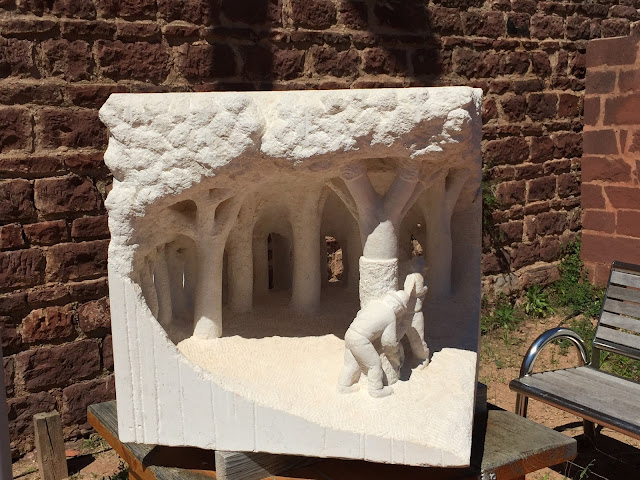 |
Leaving the Broomielaw about 1900
|
The pictures in this post come from “Clyde Water” by Maurice
Lindsay published in 1958.
 |
| Dunoon in the 1840s |
Mansions and marine villas in Dunoon and other seaside
villages in the firth of Clyde were built by merchants, self-made men who dealt
in tea, tobacco, soap, coal, iron and steel, ships and railway engines. During the 1930s houses on the west coast of
Scotland were still being taken for the summer as they had been at Bournemouth
in Edwardian times.
In his book, Maurice reminisces on his childhood memories of
trips, “Doon the watter,” in the 1930s.
He describes his first voyage on RMS Columba from Broomielaw
in Glasgow thus,
‘We set out on the first of July; mother and father, nurse,
four children, dog, cat and goldfish. A
great deal of luggage had to be taken.
We got up at five in the morning and a horse-drawn cart arrived at six to
carry the luggage down to the quay. I
was given the job of guarding the cat while the luggage was being grunted and
manoeuvred round the bends of the staircase.
The cat had the idea that if he managed to escape he would not have to
undergo his ordeal of transportation by basket.
The Columba had two red and black funnels and huge gilded
paddle-boxes. She smelt of heated engine
oil, good galley cooking and well-scrubbed cleanliness. We established ourselves in the saloon where
there were a number of seated bays lined with dark red velvet plush, richly
draped with similar hangings. The cat
remained obligingly silent, but at the entrance a liveried steward looked at me
with an air of hostility. “What’s in that basket?” he demanded. “Provisions,” I answered. He grunted and let us past.
Up on deck the Captain took a final look at his watch,
another at the quay, then pulled the clanging brass levers by his side. The paddles began to thresh the water, nosing
the ship’s bow towards the centre of the river and we slid slowly forward, past
miles of shipyards, resounding with the racket of the riveters welding the
rusty hulks of the ships, past towering ocean-going liners and rusty old
dredgers squatting in the middle of the river."
 |
| The Lord of the Isles arriving at Rothesay in 1900 |
After a morning’s sail to Dunoon past Greenock and Gourock,
the sail to Innellan took 20 minutes. A
taxi hurled us along the shore road to the house, which stood at the foot of a
terraced hill garden 200 yards from the shore. A horse and cart bearing our heavy
luggage crunched its patient way up the garden path. Once unpacked, it was time for High tea and
then for the garden.”
 |
| The Waverley arriving at Rothesay about 1950 |














































